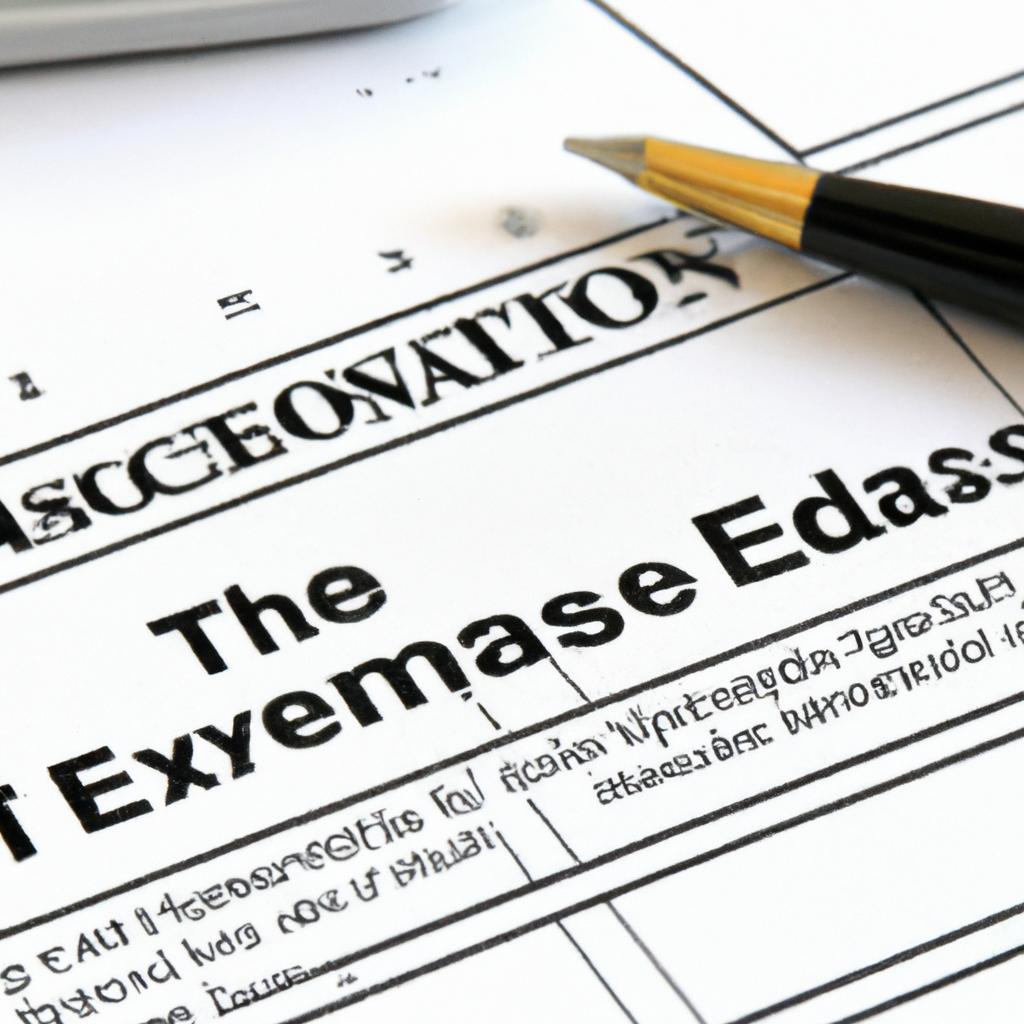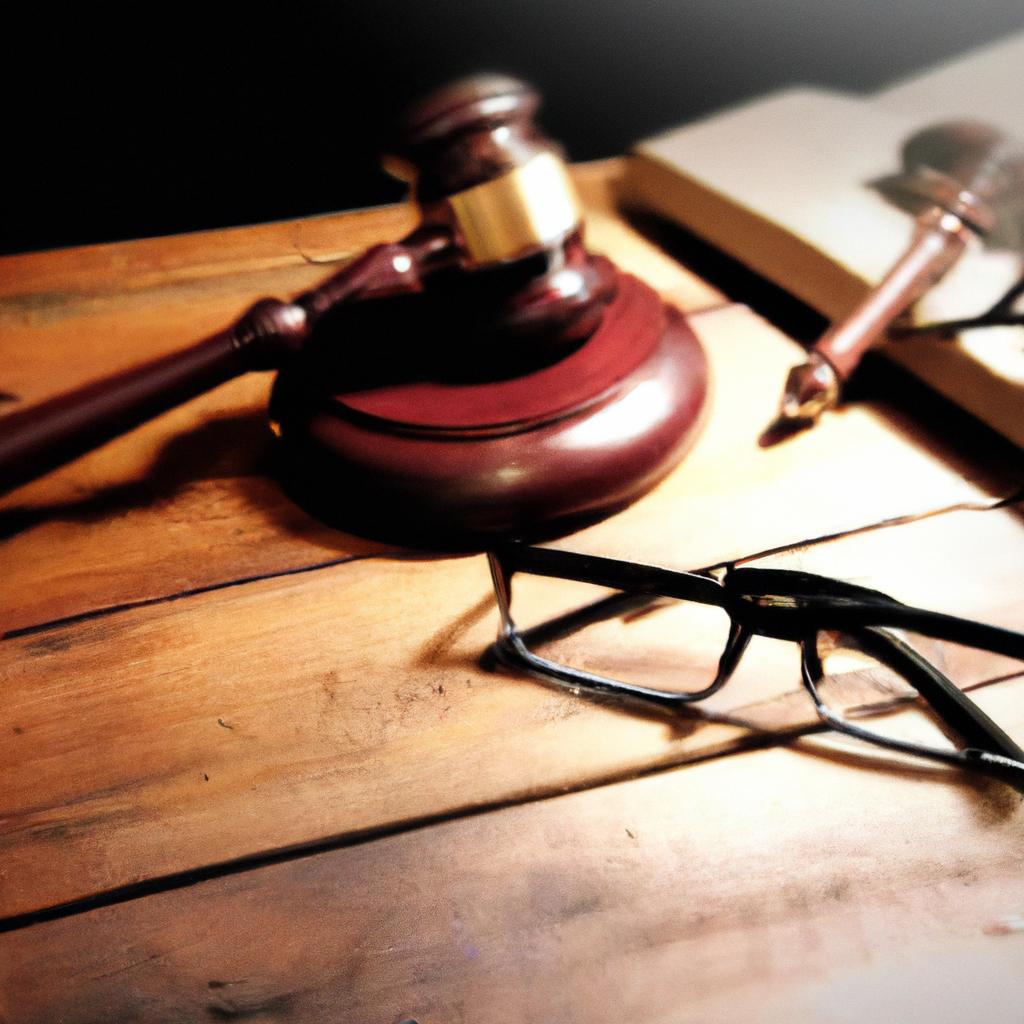Once the meticulous process of inventory and appraisal has been completed, the next steps in the legal journey unfold with intricacy and diligence. At Morgan Legal Group, nestled in the heart of New York City, our seasoned team of attorneys expertly navigate the complexities that arise post-inventory and appraisal. Specializing in estate planning, probate, elder law, Wills, and trusts, our firm is dedicated to guiding clients through the often intricate terrain that follows these crucial initial steps. Join us as we delve into what happens after inventory and appraisal, shedding light on the pivotal moments that lay ahead in the legal voyage of estate administration.
Navigating the Legal Process post-Inventory and Appraisal
After the completion of the inventory and appraisal phase, the legal process in estate planning typically moves on to the next important steps. This includes:
- Reviewing the inventory and appraisal reports to ensure accuracy and completeness
- Identifying any discrepancies or issues that may need further clarification or resolution
- Preparing for any potential challenges or disputes regarding the estate assets
It is crucial to navigate this phase of the legal process with careful attention to detail and thorough analysis. Our team at Morgan Legal Group in New York City is well-equipped to assist with complex estate matters and ensure a smooth transition to the next steps in the legal process post-inventory and appraisal. With our expertise in estate planning, probate, elder law, Wills, and trusts, we are committed to providing guidance and support every step of the way.
Assessing Tax Implications and Estate Distribution
After the inventory and appraisal process, the next step in is determining the fair market value of the assets. This is crucial for calculating the potential tax liabilities that may arise upon the transfer of these assets to the beneficiaries. Proper valuation of assets such as real estate, investments, and personal property is essential to ensure accurate estate distribution and tax planning.
Once the fair market value of the assets has been determined, it is important to consider the impact of estate taxes on the distribution of the estate. Understanding the tax implications, exemptions, and deductions available can help minimize tax liabilities for the beneficiaries. Utilizing strategies such as setting up trusts, gifting assets, or creating charitable donations can also be beneficial in reducing estate taxes. Working with experienced estate planning professionals, such as the team at Morgan Legal Group, can help navigate the complexities of tax planning and ensure an efficient and effective distribution of assets to your loved ones.
| Asset Type | Estimated Value |
|---|---|
| Real Estate | $500,000 |
| Investments | $300,000 |
| Personal Property | $100,000 |

Engaging Legal Counsel for Probate Proceedings
Once the inventory and appraisal process in probate proceedings have been completed, it is crucial to understand the next steps in the legal process. At this stage, it is important to engage the services of experienced legal counsel to navigate the complexities of probate law and ensure a smooth and efficient resolution of the estate.
After the inventory and appraisal have been finalized, the next steps typically involve distributing the assets of the estate to the beneficiaries, paying any outstanding debts and taxes, and ultimately closing the estate. Legal counsel can assist in drafting necessary legal documents, ensuring compliance with all legal requirements, and representing the interests of the estate and its beneficiaries throughout the probate process.

Maximizing Asset Protection and Minimizing Liability
After the inventory and appraisal process is completed, it is crucial to take the necessary steps to maximize asset protection and minimize liability. This involves careful planning and strategic decision-making to ensure that your assets are safeguarded and your liabilities are minimized. Here are some key steps to consider:
- Asset Protection Strategies: Implementing asset protection strategies such as setting up trusts, limited liability entities, and gifting can help protect your assets from creditors and legal claims.
- Insurance Coverage: Reviewing and updating your insurance coverage, including liability insurance, can provide an additional layer of protection in case of unforeseen circumstances or legal disputes.
- Legal Compliance: Ensuring that your estate planning documents are legally compliant and up to date can help prevent potential legal challenges and protect your assets in the long run.
In addition to these strategies, it is important to work closely with a knowledgeable attorney who specializes in estate planning and asset protection. An experienced lawyer can provide valuable guidance and help you navigate the complex legal landscape to protect your assets and minimize liability effectively. Remember, proactive planning is key to ensuring your assets are protected and your liabilities are minimized for the future.
Q&A
Q: What happens after inventory and appraisal?
A: After the inventory and appraisal process is completed, the next steps typically involve reviewing the findings and making decisions based on the results. This may include determining the value of assets, understanding the condition of inventory, and assessing the overall financial health of the business.
Q: How can businesses benefit from conducting inventory and appraisal?
A: By conducting inventory and appraisal, businesses can gain a better understanding of their assets, which can help with financial planning, decision-making, and overall business strategy. Additionally, a thorough inventory and appraisal can provide valuable insights for potential investors, lenders, or buyers.
Q: What are some common challenges businesses may face after inventory and appraisal?
A: Some common challenges businesses may face after inventory and appraisal include discrepancies in inventory counts, outdated asset values, and unexpected depreciation. These challenges can impact financial reporting, tax liabilities, and business valuation.
Q: How can businesses address the challenges that arise after inventory and appraisal?
A: To address the challenges that arise after inventory and appraisal, businesses can implement regular inventory audits, update asset values regularly, and work with professionals to assess depreciation and value fluctuations. It is also important to have accurate record-keeping systems in place to track changes in asset values over time.
In Summary
As we wrap up this exploration into what happens after inventory and appraisal, it is evident that this process sets the stage for important decisions to be made. From determining value and allocating assets, to understanding the financial health of a business or estate, inventory and appraisal play a crucial role in providing clarity and insight. With this knowledge in hand, stakeholders can move forward confidently, equipped to make informed choices and navigate the next steps in their journey. As the final pieces of the puzzle fall into place, a new chapter begins, rich with possibilities and potential. The journey continues, guided by the valuable information gained through the meticulous work of inventory and appraisal.
 What Happens After Inventory and Appraisal: Understanding the Next Steps in the Process
What Happens After Inventory and Appraisal: Understanding the Next Steps in the Process
You’ve completed your inventory and appraisal and have a comprehensive list of all the items in your possession as well as their corresponding values. But what happens next? This article will guide you through the next steps in the process after inventory and appraisal, providing valuable information to help you navigate this crucial stage smoothly. So, let’s dive in!
1. Verification of Inventory and Appraisal
Once your inventory and appraisal are complete, the first step that follows is the verification process. This involves cross-checking the list of items and their values with relevant documents such as purchase orders, sales receipts, and invoices. The purpose of this step is to ensure the accuracy and completeness of the information collected during the inventory and appraisal. Any discrepancies found during this stage must be addressed promptly to avoid any issues in the future.
2. Organization of Information
Now that your inventory and appraisal have been verified, it’s time to organize the information. This involves sorting the items into categories such as furniture, equipment, inventory, etc. Having a well-organized list will make it easier to keep track of your assets and their values. It is also beneficial for future inventory and appraisal purposes.
3. Review of Insurance Coverage
One of the essential steps that follow after inventory and appraisal is reviewing your insurance coverage. This is crucial because it ensures that your assets are adequately covered in case of theft, damage, or loss. Based on the information gathered during the appraisal, you can work with your insurance provider to adjust your coverage if necessary.
4. Tax Reporting
Tax reporting is another crucial step in the process. The information gathered during the inventory and appraisal is used to determine the value of your assets for tax purposes. This includes reporting any assets that qualify for depreciation, such as equipment and furniture. It is essential to accurately report all assets to avoid any discrepancies with the tax authorities.
5. Estate Planning
If you are going through inventory and appraisal as part of estate planning, the next step would be to update your will or trust. This involves transferring ownership of your assets to your designated beneficiaries. If you have significant assets, it is advisable to work with a lawyer or financial advisor to ensure that your estate plan is legally binding and meets your wishes.
6. Financial Planning
Inventory and appraisal can also play a crucial role in financial planning. If you have had a significant change in your assets, such as acquiring new items or selling some, it is essential to update your financial plan. This will help you make informed decisions about your finances and investments moving forward. Additionally, knowing the value of your assets can also help you determine your net worth.
7. Asset Management
Asset management involves keeping track of your assets, their values, and any changes that occur over time. This can include updating your inventory and appraisal periodically, especially if you acquire new assets or dispose of existing ones. Having an up-to-date list of your assets can also come in handy in case of an insurance claim or if you are planning to sell your business.
Practical Tips and Benefits of Inventory and Appraisal
The inventory and appraisal process may seem like a tedious and time-consuming task, but it offers numerous benefits in the long run. Here are some practical tips and benefits to consider:
– Use a reputable and accredited appraiser to ensure accurate values and avoid any issues with insurance or tax reporting.
– When organizing your assets, consider using categories and labeling items to make it easier to keep track of them.
– Update your inventory and appraisal regularly to ensure accuracy and to have a current record of your assets at all times.
– Knowing the value of your assets can help you make informed decisions about insurance coverage, financial planning, and estate planning.
– In case of an insurance claim, having an accurate and updated inventory and appraisal can help expedite the process and ensure proper compensation.
Real-Life Examples
Here are some real-life scenarios where understanding what happens after inventory and appraisal is essential:
– A business owner had their entire inventory stolen, but they were able to expedite the claims process and receive full compensation thanks to having an accurate and updated inventory and appraisal.
– A family discovered valuable antique items while going through their parent’s belongings after their passing, but they were unable to determine the items’ value accurately due to a lack of inventory and appraisal. This caused delays in the estate settlement process.
– A couple who had their assets inventoried and appraised for their estate plan were able to save on taxes by utilizing the values determined during the appraisal.
In Summary
Inventory and appraisal are critical steps in managing your assets, whether for business or personal reasons. Understanding what happens after this process is crucial to ensure the accuracy and completeness of your records and to reap the benefits it offers. By verifying the inventory and appraisal, organizing the information, reviewing insurance coverage and taxes, and updating your estate and financial plans, you can effectively manage your assets and make informed decisions about your finances. So if you haven’t gone through inventory and appraisal yet, it’s time to consider doing so for the benefits it provides in the long run.










